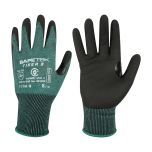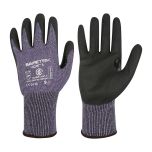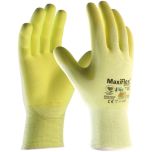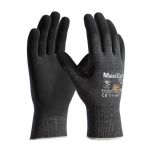
Gloves are an essential part of personal protective equipment (PPE) for many workers. When it comes to safety gloves, one of the most important features is the coating on the palm. The type of coating can greatly affect the glove's grip, durability, and overall effectiveness.
What Are Palm Coated Gloves?
Palm coated gloves are a type of safety glove that features a coating on the palm area of the glove. This coating can be made from a variety of materials such as latex, nitrile, polyurethane, and PVC. The purpose of the coating is to provide additional protection, grip, and durability to the glove.
Different Types of Palm Gloves Coating
Latex is one of the most popular coating materials for gloves due to its excellent grip and flexibility. It also provides protection against punctures and abrasions. It is a great option for handling natural products such as timber, bricks, pavers, concrete and masonry. However, it is not suitable for individuals with latex allergies.
Nitrile is a synthetic rubber that is popularly known in offering superior resistance to chemicals and oils. Nitrile-coated gloves are also resistant to punctures and abrasions and have got slip resistant properties, making them a popular choice in industries where these hazards are present.
Polyurethane Gloves
Polyurethane is a versatile coating material that is commonly used in gloves for industries such as construction, automotive, and electronics. It provides excellent dexterity and grip and is resistant to oils and solvents.
PVC (polyvinyl chloride) is a durable and flexible material that is often used in gloves for the chemical and oil industries. It offers excellent resistance to chemicals, oils, and acids.
Foam nitrile coatings offer excellent grip, flexibility and dexterity while providing cushioning and shock absorption. These gloves are ideal for industries such as construction, manufacturing, and assembly.
The Benefits of Palm Coated Safety Gloves
With their protective coating, palm coated safety gloves offer several benefits. Here are just a few:
- Improved grip: The coating on the palm of the safety glove provides a better grip on tools, materials, and other objects. This is especially important in industries where workers handle slippery or oily materials.
- Protection: Palm coated gloves provide protection against cuts, punctures, and abrasions. This can help prevent injuries and keep workers safe on the job.
- Durability: The coating on the palm of the glove can also improve the durability of the safety glove. This means that the gloves will last longer, which can help reduce the cost of replacing gloves.
- Comfort: Palm coated safety gloves are often more comfortable to wear than uncoated gloves. This is because the coating can provide a cushioning effect, which can reduce hand fatigue and increase comfort.
Uses of Palm Coated Gloves
- Construction: Palm coated gloves are often used in the construction industry, where workers handle heavy materials, power tools, and sharp objects.
- Manufacturing: Palm coated gloves are also commonly used in the manufacturing industry, where workers handle machinery, parts, and chemicals.
- Agriculture: Palm coated gloves are ideal for use in the agriculture industry, where workers handle chemicals, plants, soil, and equipment.
- Warehousing and logistics: Palm coated gloves are also used in warehousing and logistics, where workers handle boxes, pallets, and other materials.
Coated safety gloves are an excellent option for many applications in the workplace. They provide several benefits that can help improve safety, comfort and productivity. Coated gloves can even reduce the risk of injury or exposure to hazardous materials. By choosing the right palm coated gloves for your industry and tasks, you can help keep your workers safe and productive on the job.




